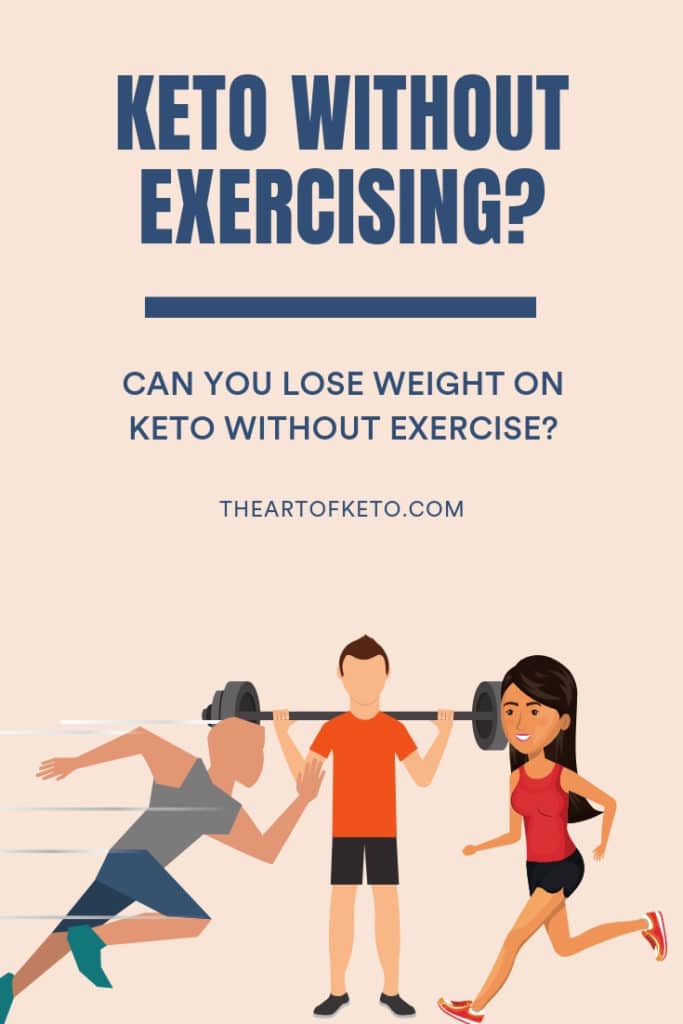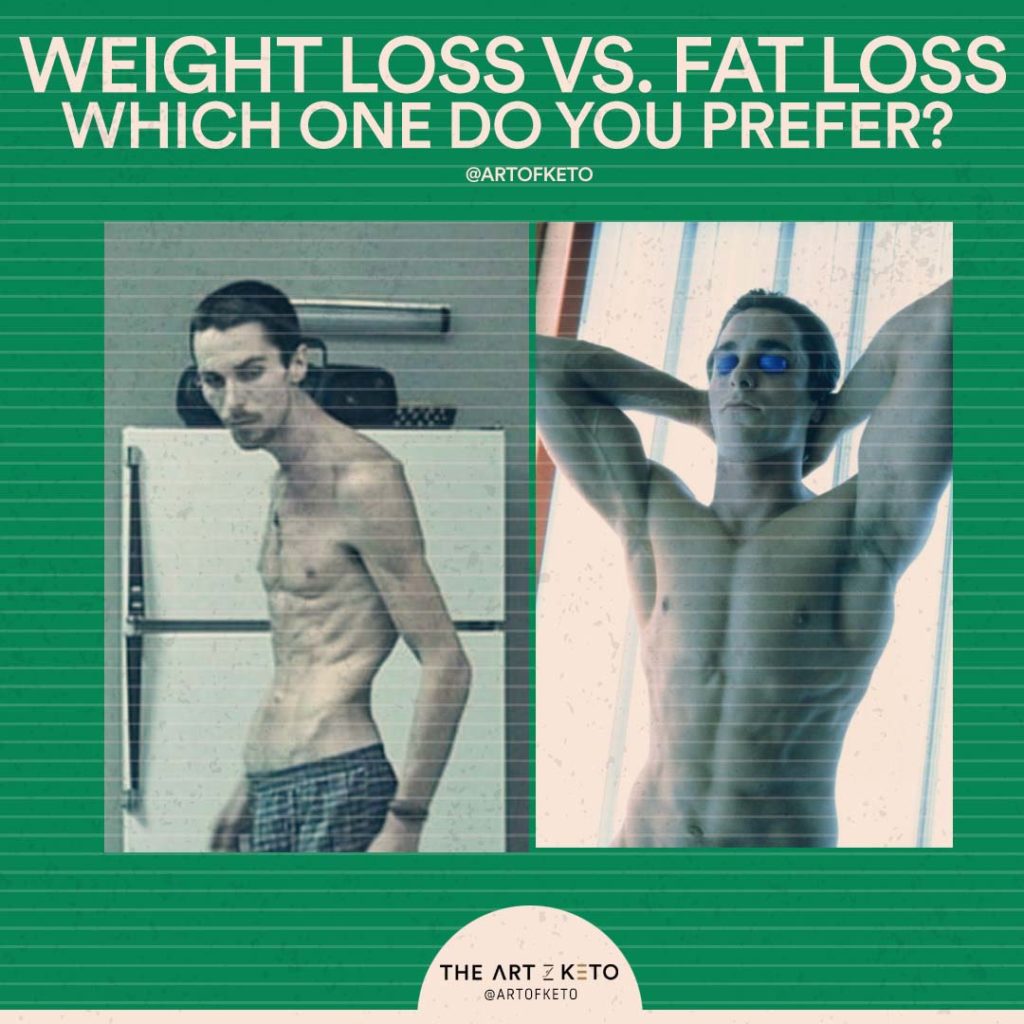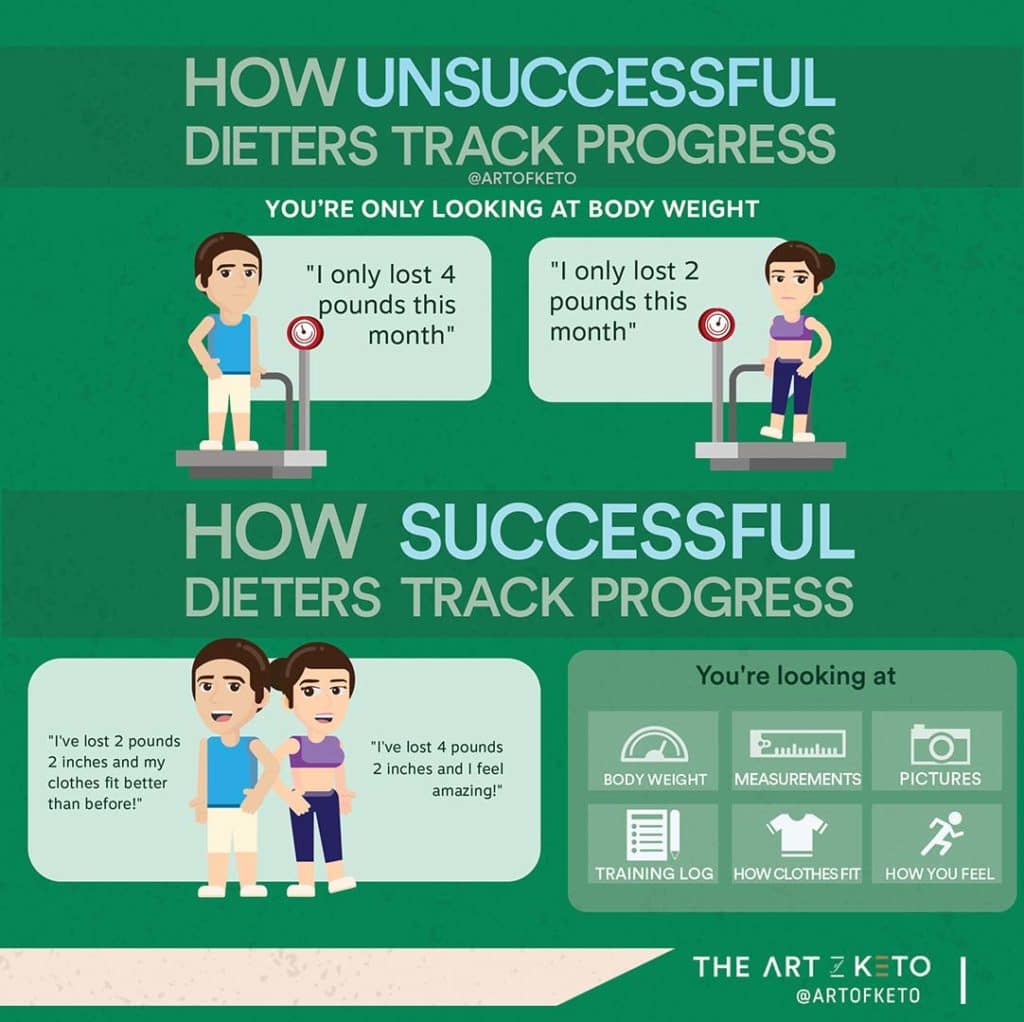If by work, you’re asking if you can you lose weight without exercise, then yes.
Weight can be lost on a keto diet without any type of formal exercise. However, weight loss may be slower, and the risk of muscle loss increases, which lowers a person's metabolic rate. Including exercise, especially resistance training, can speed up weight loss and help preserve muscle.

This will be explained in a bit.

There are extreme cases when someone may be severely overweight or obese and combining a keto diet and exercise is simply not a feasible option. In this case, it is recommended that the individual loses enough weight to be able to safely combine their ketogenic diet and exercise.
Individuals with an extreme amount of weight can generally get away with not exercising and also without sacrificing too much lean body mass. At higher levels of body fat, the risk of muscle loss is decreased, not completely removed. Conversely, the leaner you are, the higher the risk of muscle loss as you lose weight.
There are many people in the keto diet space with amazing transformations that did not initially add in any exercise. However, I find that many, if not all of them, have now started incorporating exercise
After reaching out to a few individuals who had gone through a keto diet, it was unanimous that if they had to do it all over again, they would have incorporated exercise from the very beginning.
Table of Contents
Weight loss vs. Fat loss
Weight loss and fat loss are often used interchangeably, but they are not one and the same. Whether you realize it or not, fat loss is what you and most dieters wish to accomplish.
Weight loss is easy, don’t drink water for a couple days and you’ll drop a few pounds. Although, when you start drinking water again the weight will quickly return. Obviously, this isn’t ‘real’ weight loss.

As I stated before, the goal with any diet is primarily to lose FAT, not just weight. While dieting, the ideal scenario would be for lean body mass to remain the same or even increase.
Lean body mass, which includes your muscle mass, is all your weight minus your fat mass.
This includes: bone, body water, minerals, muscle glycogen, organs, etc.
Therefore.
Total bodyweight = Fat Mass + Lean Body Mass
You may have heard of the term bodyfat % thrown around somewhere. Bodyfat percentage is calculated by taking your fat mass and dividing it by your total bodyweight.
Bodyfat percentage = Fat Mass / Total Bodyweight
A sample body composition estimation
- Sara weighs 175 pounds and finds out her body fat is 30%. She has:
- 175 lbs * 0.30 = 52.5 lbs of fat
- 175 – 52.5 = 122.5 lbs of lean body mass
The ultimate goal with dieting is not simply to lose
- A reduction in fat mass
- An increase in lean body mass
- Ideally a combination of both
I’ve found this often leaves many dieters wondering why they haven’t lost any fat despite starting a keto diet and introducing exercise for the first time into their lives.
People who start exercising after a long hiatus or for the first time often gain a couple of pounds from increased water storage in the muscles. This weight gain is temporary and shouldn’t be confused with true fat gain.
How To Track Progress

Scale
While the scale often doesn’t paint a clear picture of what kind of weight is gained or lost, it still serves as a great tool IN ADDITION to the others mentioned.
Weight on the scale will fluctuate day to day, so the best way to use the scale is to weigh yourself daily.
Add each of the weigh-ins from the week and divide that number by 7 (assuming you weighed in all 7 days). Compare the weekly or preferably every other week averages and notice the trend.
Tape measure
Like using the scale, do this preferably first thing in the morning after going #1. You don’t have to do this
Hopefully, you have a significant other or someone that can do this for you, if not, I recommend this tape measure which is handy to take measurements on your own.
Progress photos
Every four weeks take a front and side photo, ideally under the same conditions (pose, distance from
Sometimes it’s easier to see visual changes when putting photos side to side. Four weeks allows enough time to see noticeable changes when doing a comparison.
So Does A Keto Diet Work Without Exercise
Ya ya ya… it DOES.
BUT.
By now you realize that a keto diet can work without exercise but may not be the most ideal when it comes to retaining or even gaining lean body mass, which SHOULD be your goal.
That said, the old adage reigns true that fat loss does indeed come down to around 80% diet.
But, in my experience, many struggling dieters find themselves in situations where they’ve lost a lot of both muscle and fat, and as a result, feel “skinny fat.” Basically, they’ve ended up just a skinnier version of their fat selves.
Many people who end up losing weight without resistance training suffer from not being able to lose weight from those pesky stubborn areas like their belly, lower back, hips, and thighs.
Having additional lean mass isn’t only a vanity thing either. Lean body mass also helps you with:
- Losing more fat
- Having a faster metabolism
- Achieving a healthier and leaner body
- Contributes to stronger bones
- Helps battle disease
- Helps protect against insulin resistance
Have I sold you yet on the benefits of including exercise in your fat loss efforts?
So what exercise do I recommend?
Keto Diet and Exercise
Often when people refer to exercise they are generally referring to either weight training or cardio.
Both forms of exercise have their place in the grand scheme of things, but the two serve entirely different purposes from a body composition standpoint.
To oversimplify it, cardio helps with determining how much weight is lost while resistance training will help determine what weight is lost. i.e. fat vs. muscle.
Knowing
Doing so not only allows you to reach your goals much quicker, but you have more tools at your disposal for sustaining the lost weight and optimizing your body composition to your liking.
That said, if I HAD to choose only one form of exercise that would best serve you in your fat loss efforts, it would without a doubt be resistance training / weight lifting over cardio ten out of ten times.
Keto Diet And Weight Training
The primary form of exercise that will be most beneficial to retaining and possibly gaining lean body mass is going to be resistance training. This doesn’t necessarily mean you have to run out the door and become a bodybuilder.
And ladies, I PROMISE PROMISE PROMISE YOU, that you won’t get big and bulky by lifting weights.
I know the gym may be intimidating for many, but there is a myriad of ways you can perform resistance training. One of the simplest ways to start is with bodyweight exercises like pushups, squats, pullups, lunges, etc.
There is also a myriad of gyms such as planet fitness or boot camps like The Camp and Fit Body Boot Camp that promote non-intimidating environments.
These types of gyms and boot camps are generally more welcoming to beginners and intermediates of all shapes and sizes.
Boot camps or even CrossFit gyms are also great as they have
Whichever route you do decide, the primary goal here is to progressively do more over time. This could be something as simple as doing pushups on your knees and building up enough strength to do
Or maybe it’s doing one pullup the first week and building up to two pullups in week two, so on and so forth.
Resistance training doesn’t always necessarily mean having to lift weights in the gym. Weights are just a tool to provide the stimulus your body needs.For more info on different forms of progression I wrote a full guide on how to gain muscle on a ketogenic diet. You can also learn more about how to lose weight on keto in the ultimate guide I wrote which goes more in depth on the subject matter of fat loss and how to track, adjust, and achieve your goals.
What about cardio?
Cardio On A Ketogenic Diet
Performing cardio is great for working your muscles, primarily that of your heart and lungs. That said, cardio is not a replacement for resistance training but can be a great compliment to it.
Weight loss, in the most general of sense, comes down to expending more calories than we consume.
There are three primary ways of accomplishing this:
- Diet
- Cardio
- Diet + Cardio
The loss of one pound of fat requires that 3,500 calories be burned in excess of what we consume (food intake).
Therefore, the typical dieting advice to dieters is to restrict caloric intake by 500 – 1000 calories per day which theoretically should yield a 1-2 lb. fat loss over the course of a week.
- 500 calories * 7 days = 3500 calories = 1 lb of weight loss
- 1000 calories * 7 days = 7000 calories = 2 lbs of weight loss
Assuming we are aiming for one pound of fat loss per week the easiest way would be to cause a negative calorie balance of 500 calories per day. Given the three primary ways listed above it could look like the following:
- Diet – 500 calorie reduction in food intake per day
- Cardio – Burn 500 calories per day doing some form of cardio
- Diet + Cardio – 250 calorie reduction in food intake and 250 calories burned through cardio.
All of the above methods should result in roughly the same amount of weight loss, so how you go about creating the calorie deficit is usually left up to the individual.
Certain people may find it easier to eat less while others rather eat more food and increase their activity.
Often times, smaller individuals especially females may find that they need to increase their cardio to see any significant weight loss without reducing their calories to such low levels that may lead to vitamin and mineral deficiencies.
And not to mention… hunger.
Granted, we are on a diet and hunger should be expected, but if you are eating too few calories I would typically recommend you increase food intake AND increase your movement or cardio to create the calorie deficit.
Cardio, while not required, can be a great way to increase your calorie deficit for losing weight without decreasing your food intake further.
However, cardiovascular activities don’t generally provide enough of a stimulus to affect lean body mass to any significant extent making it not a suitable replacement for resistance training and preserving or gaining lean body mass.
Additional Reasons To Exercise On A Keto Diet
If you haven't been sold on including at least some low-intensity exercise on a keto diet, here are a few other reasons you need to know.
It's The Fastest Way To Lose Weight
We've established that you can lose weight without exercise on keto or low carb, but let me rephrase it to sound more appealing. Most people, including myself, and I'm guessing you as well, want to lose weight AS FAST as possible.
Even if it's a light walk or two a day, including exercise will make you lose weight that much faster.
For example, just walking 3 miles a day burns an extra 300 calories on average. If we multiply 300 calories over the 30 days in a month, that's close to an additional three extra pounds you can lose every month with minimal effort.
Increases Energy Levels
There's a reason they call it runners high, and that's because exercise can help boost energy levels.
Next time you may feel like taking a nap, going for a walk might do you better. Not only will you feel more refreshed and awake, but you'll be burning additional calories.
Workouts are good for the body and the mind.
Win-Win.
Decrease In Body Fat Percentage
When people talk about body fat percentage, it's a percentage of how much fat weight you have relative to your total body weight.
The best and fastest way to decrease your body fat percentage is to:
- gain muscle without gaining fat
- maintain muscle while losing fat
- gain muscle while losing fat
Notice how everything includes gaining or maintaining muscle? Well, that can only happen WITH exercise. It doesn't matter if you follow a low carb high fat diet if you don't have an exercise plan to go along with it.
Conclusion
To definitively answer your question of does a keto diet work without exercise, if weight loss is your only goal, then yes. In the end, diet will determine how much weight you lose, but exercise, specifically weight training, will help determine what weight is lost.
And remember, we’re after
When implementing a keto diet and weightlifting, you may not lose as much ‘weight’ compared to diet + cardio or diet alone, but the ratio of fat to muscle loss will be much more in your favor, you’ll look much better, and you’ll set yourself up for further progress over the long-term.